Can gut feeling be a good way to make decisions? In everyday life maybe, what can hardly be said about business. Decision-makers at any level, be they business owners or staff marketers, normally rely on solid facts but not on intuition to succeed.
However, businesses operate huge volumes of heterogeneous data, both current and historical, which makes manual analysis nearly impossible. But it’s not even needed, because comprehensive analytics becomes available in several clicks with the advent of the cloud and its super-convenient tools.
But what’s under the hood of cloud analytics? Why is it more beneficial than on-prem, which components does it incorporate and which pain points does it have? Let’s try to figure it out together in our new blog post.
What Is Cloud Analytics, How Does It Work, and Differ from On-Prem?
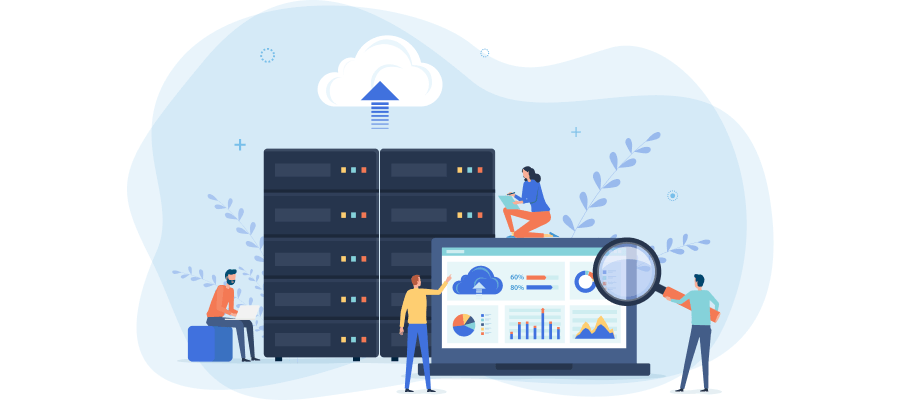
Let’s start our fascinating immersion in the topic from the basics.
In general, cloud analytics is the process of using cloud tools for data extraction, processing, and analysis. Further, it helps to build insightful reports and take data-driven strategic and tactical decisions at different levels. All you need is a battle-tested cloud analytics vendor that corresponds to your requirements and a proficient IT team.
On the other hand, analytics can be done with on-prem servers. So, why do I need to entrust my data to a provider, you might object. Indeed, nothing is impossible, and you can do it on local servers. But the difference is in the time and effort you’ll have to make.
Cloud features multiple tools and configurations that make cloud-based data analytics a breeze, and you are empowered to use them immediately after you’ve purchased the subscription. Opting for local servers, you select a thorny path of manual deployments and fine-tunings, let alone the related expenses for hardware. Ready for that? If not, cloud analytics is right for you. Let’s dig deeper into its benefits in comparison with the on-prem in the next paragraph.
Moving Away From On-Prem: Benefits of Cloud Analytics
Scalability Is Not an Empty Sound for Analytics

This is the first and most weighty bonus offered by cloud providers to their clients. Why is it so? Let’s consider a simple example. Say, you’ve opened a small niche online store. The amount of buyers and goods you sell is not that big for the time being. Therefore, the volume of data you operate with is not that huge, and the resources you consume for analytics are not significant.
Over time your online store has grown, you’ve added multiple product categories, expanded your geography span, and acquired thousands of new customers. Obviously, this entailed increased datasets and a traffic boost.
With your business expansion, analytics has also become more complex, requiring more computational resources. If you initially deployed your infrastructure in the cloud, it wouldn’t be a problem to expand the space intended for analytics and configure capacities accordingly.
In contrast to the cloud where the scalability settings can be done in several clicks, dealing with the on-prem infrastructure is a completely different story. First, if you purchased hardware intended for a small online store, with business expansion these capacities wouldn’t be enough to conduct comprehensive analytics at all levels. And you’ll inevitably have to purchase new equipment and incur additional expenses.
The second underwater rock lies in on-prem configurations. Conducting analytics in the cloud is a real pleasure; all you need is to do several clicks — and voila, everything works as if by magic. Unfortunately, this trick won’t work in the case of a local server. Since it doesn’t have any automation tools, all the fine-tunings must be done manually, which takes time and effort.
Flexibility Goes with Scalability Hand in Hand

Cloud platforms normally have their connectors, so you could ensure hassle-free data extraction from multiple data sources for further analytics, such as Google Maps, CRM Creatio, Zoho, etc. This means that your team doesn’t need to write any code to establish a connection — in fact, it’s a zero code solution ensuring a high level of convenience and flexibility. Moreover, If a business decides to switch CRM systems or add new data sources, cloud platforms can easily accommodate these changes with minimal disruption.
Be it a Power BI, Microsoft Fabric, or other platforms offered by cloud analytics providers — all of them offer hundreds of connectors to the most popular solutions. Besides out-of-the-box connectors offered by Google or Microsoft, there are companies developing their own ones so you can expand your cloud analytics capabilities.
Dealing with on-prem analytics, the development of all possible connectors lies on your shoulders. Imagine the extent of the endeavor! You are responsible for development, maintenance, and updating, which is time- and resource-consuming, and absolutely not flexible.
Cost Is Trivial But Crucial Point

Let’s turn back to the example of the online store we discussed above. When you only start your business, it makes little sense to invest thousands of dollars in hardware and possible on-prem configurations. It’s much more reasonable to deploy your infrastructure in the cloud, use its capacities for analytics, and consume as many resources as you need.
In other words, you need to process your data and build reports — you leverage the cloud tools. When finished, you turn this virtual machine off and don’t pay for the unused resources.
Of course, there are stories that large businesses opt for on-prem and significantly save on data management. Still, the trick works only for well-established corporations that have been on the market for a long time and are expanding further. However, for a small business, this is an unnecessary splurge since the perspectives are quite vague.
Discover more about Cloud Cost Optimization
Cloud Analytics in Action or Examples of Application
Cloud analytics can do a good job at different levels, and its specifics depend on the amount of data we need to process and the sources we gain the information from.
Strategic level |
Tactical level |
Operational level |
|---|---|---|
Common data on company performance intended for business owners to:
|
Data on a specific department for setting and addressing tasks defined at the strategic level:
|
Data on a concrete task set at strategic or tactical level for:
|
Do you really need cloud analytics or can you easily do without it? Of course, it’s up to you to decide, but let’s go over some of the most common application fields, where the cloud and its set of powerful tools for data analysis is an indispensable assistant in business growth.
Learn more about Types of Data Analysis
Marketing

How do you know which of your marketing strategies works and which fails? How do you define your pricing policy, plan deliveries, implement new sales channels, and adapt to ever-growing customer expectations?
Analytics and visualization allow you to define the most efficient marketing strategy, gain valuable insights into customer behavior, forecast future sales, and optimize inventory.
Financial and Insurance Sectors
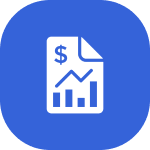
Cloud analytics also helps to resolve a pool of problems in such sectors as insurance and finance. With its capabilities, we can track suspicious transactions, detect fraud, manage financial risks, and elaborate strategies.
However, to do that, stakeholders need exceptional accuracy and data quality. Meanwhile, it’s not a rare story that data from a conditional CRM system don’t correspond to data from the accounting system, which affects the analytics precision. Being fully aware of such an annoying pain, cloud platforms offer powerful tools to carry out rigorous control over data quality which allows users to design accurate reports.
Read why Insurance Data Analytics is an Industry Must-Have
Components of Cloud Analytics. What’s Under the Hood?
Before beautifully designed and insightful reports get on your table, they go through a long path. First, data must be requested from the needed sources, cleaned and filtered, and uploaded to a database for further analytics and visualization.
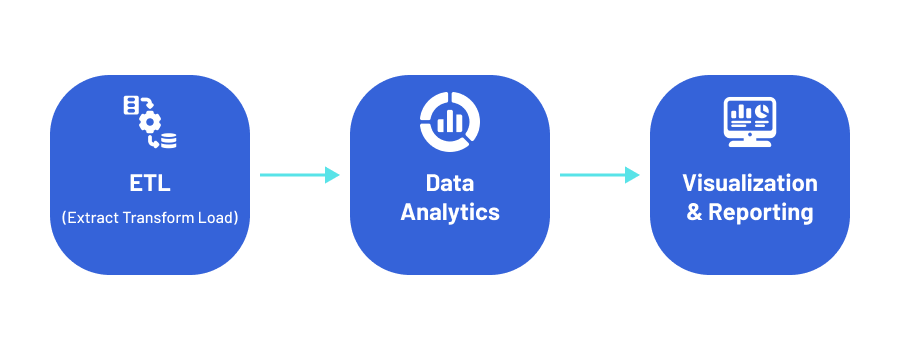
The first step is data extraction, and here’s where our hurdles start. In different sources data may be stored in different ways and sometimes even in ordinary files. This initially causes inconvenience and a drawdown on performance, which means that data require processing for further upload.
Specific tools, such as Microsoft Fabric, offer multiple options for any taste to process data, be it SQL functions, Python, or even no-code solutions. The selection depends on your preferences and requirements. After that, clean and filtered data are uploaded to storage, again, at your choice.
After data are prepared, we move on to the next step — analytics. Here, you are also free to choose the methods to analyze your dataset. For example, this can be Python code defining correlations between different columns. Or you can build a machine learning model for cloud-based predictive analytics.
Only after all these steps are completed can you visualize your reports and present them to stakeholders in the view of graphs, charts, and complex multi-page dashboards. As you remember, analytics and reports can be built on different levels, depending on the data we process.
Read about the Main Steps of Creating a Cloud Data Management Strategy
Selecting a Platform for Cloud Analytics. Are They Interchangeable?
Here, we can highlight four cloud analytics solutions that are also used for data management and visualization.
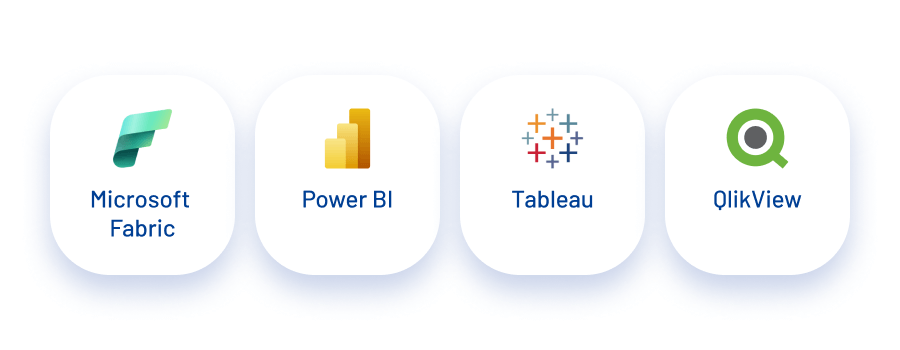
Some think that all these tools are similar and if a data engineer is proficient in working with Tableau, they will be equally proficient in using Microsoft Fabric. However, although both these platforms are used for the same purpose, they are still different in their interfaces, specifics, and features.
Which of the tools mentioned above is the most advanced and holistic one? We’d like to highlight Microsoft Fabric which was released relatively recently. This solution represents a one-fits-all platform that allows you to manage data in the most comprehensive way at all levels.
Of course, it’s impossible to say that other tools are bad or inefficient. No, but at the current moment, they are unable to offer a versatile set of components that Microsoft Fabric features. Meanwhile, they don’t stand still, and it’s not excluded that they will catch up to MF or even overtake it in the future.
Cloud Analytics Pain Points and What Should Be Kept in Mind
Data Quality Is the Most Painful Pain Ever

Is it possible to build insightful analytics and high-quality reports on the basis of low-quality data? Just think, the majority of data sources are filled by people, and people are always inclined to make mistakes and typos. Missing values in columns, sales made in 2300, wrong date format — all these things will inevitably affect the correctness of analytics and final reports if not fixed.
Integration with Data Sources Beyond Your Control

You may work with external data sources which you can’t control. For example, we need a price list from Amazon to build our analytics. When downloading it from the website, we have no guarantee that the data in this file will be correct. Therefore, we’ll have to validate it manually or automate this process somehow, but the second option works only if we’ve already discovered some patterns in previous files.
Discover more about Cloud Integration
Cloud Analytics Can Be Not Only the Cost-Saver
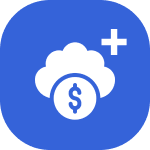
Of course, in the majority of cases, the cloud helps to reduce costs, but there are several traps we’d like to warn you about. It was mentioned above that the cloud is highly scalable, which is presented as its main plus. However, this may turn into enormous expenses if it gets out of control. The thing is that if the cloud is high-loaded, it automatically scales to the next level.
If you overlook this, it may happen that the cloud will scale up that much as the expenses for hardware for an on-prem data center will seem miserable. To prevent this from happening, it’s important to design your application architecture correctly.
For example, in the beginning, it’s better to dispense with autoscaling or fine-tune some alerts that would inform about upscaling. These practices will help you get the most out of the cloud capabilities and, meanwhile, exclude the risks of unexpected costs.
Wrapping Up
Cloud features powerful analytics tools that alleviate decision-making and facilitate business expansion. However, as with any other resource, it must be used wisely to maximize its benefits and avoid potential pitfalls. Proper management and strategic use are key to leveraging the full potential of cloud analytics while ensuring security, cost-effectiveness, and efficiency.
Velvetech engineers are proficient in major data management platforms and well aware of all the intricacies related to cloud configurations. Whether you’re looking to migrate to the cloud, optimize your current setup, or implement advanced cloud analytics solutions, we’re here to assist. Reach out to us, and we’ll provide expert guidance and support to help you successfully implement your cloud strategy.









